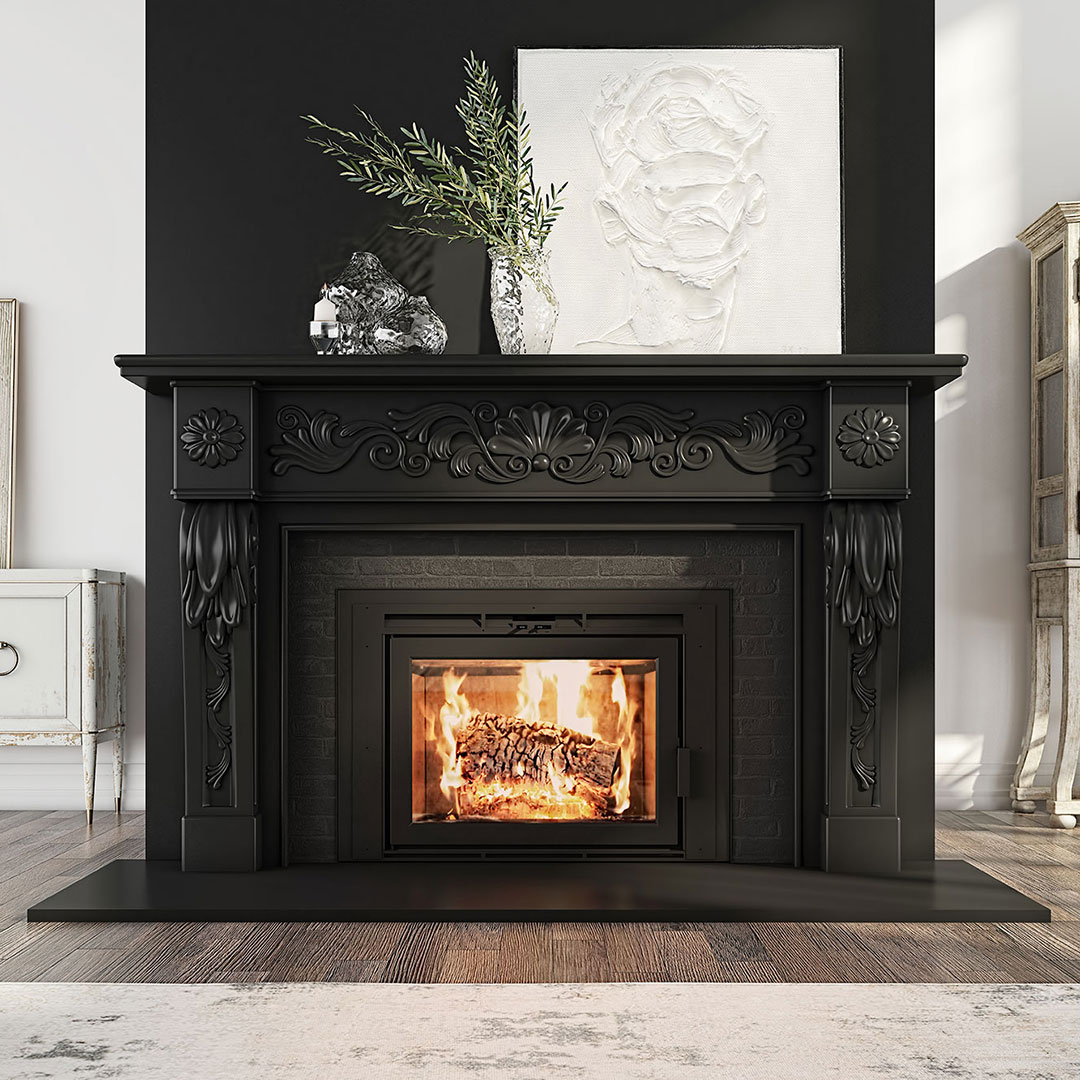What’s the Difference Between a Fireplace and an Insert & Which is Right For You?
Few home heating systems give you the ambiance of a wood-burning fireplace. They hearken back to a simpler time and are often the focal point of whatever room they’re in. Whether you plan to install a fireplace or want to upgrade, you’ve probably heard the terms “fireplace” and “insert.” While they seem similar, they serve different purposes and have pros and cons. This guide will help you understand the differences between them, and which one is best for your home.
 What’s a Fireplace?
What’s a Fireplace?
A fireplace is a traditional open firebox usually built into the home’s structure. It typically has a chimney to vent smoke and gases. For centuries, people have used fireplaces, and many homeowners appreciate the nostalgic aspect of owning one. Most fireplaces are made from brick and can burn wood or gas.
What’s an Insert?
An insert is a self-contained unit installed into an existing fireplace or as a standalone system. Inserts are typically more efficient than traditional fireplaces and come in various fuel options, including gas, wood, and electricity.
Key Differences Between Fireplaces and Inserts
Construction and Installation
Fireplace: Fireplaces are part of the home’s structure. They can be expensive to build, particularly when adding a chimney or flue.
Insert: Inserts are prefabricated and can be retrofitted into an existing fireplace or added to a room without major structural changes.
Heat Efficiency
Fireplace: While beautiful, fireplaces lose a lot of heat through the chimney, making them one of the least efficient home heating sources.
Insert: Inserts are designed for maximum heat output and minimal energy loss. Inserts are typically sealed and use a blower system for better heat circulation.
Design Flexibility
Fireplace: Fireplaces offer a classic look and ambiance that’s tough to get with other systems. Homeowners also love customizing their fireplaces with mantles or different materials.
Insert: Inserts are versatile and come in various styles. However, some people think they look out of place because they don’t integrate into the home’s structure as seamlessly as a traditional fireplace.
Fuel Options
Fireplace: Typically uses wood or gas, but some units use electricity.
Insert: Offer a wider variety of fuel types, including pellet and dual-fuel models.

Pros & Cons of a Fireplace
Pros
Aesthetic Appeal: Fireplaces are timeless and traditional. There’s nothing quite like a roaring fire on a cold winter’s night.
Customization: You can choose many materials to match your home’s décor.
Cons
Heat Loss: As mentioned, traditional fireplaces are terribly inefficient, with most heat going up the chimney.
Maintenance: You must stay on top of regular chimney cleaning and inspections to prevent creosote buildup and structural damage that could cause a fire hazard.
Safety: Even if you’re careful, accidents can happen, like a stray spark or ember escaping the fireplace and starting a fire. Using a fireplace requires vigilance to keep your family and home safe.
Pros & Cons of an Insert
Pros
Energy Efficiency: Inserts are designed to contain heat. This reduces energy loss, lowers heating costs, and makes your home more comfortable.
Easy Use: Gas and electric inserts are easy to use with minimal cleanup. Some models can be turned on and off via your smartphone.
Versatility: Can be installed in a traditional fireplace or as a standalone unit.
Cons
Cost: Inserts can be expensive, especially if you need to add more venting.
Design Limitations: Modern inserts are stylish but don’t look as nice as a traditional fireplace.
 Which is Right For You?
Which is Right For You?
Which system works best for you depends on your heating needs, budget, and desired look. If aesthetics matter most, you can’t go wrong with a traditional fireplace and its authentic crackling flames. However, if this is your primary heat source, an insert is the better option because it’s more energy-efficient than a fireplace. Lastly, if you want an option that requires the least maintenance and is the safest, go with an insert.
Still confused? Call the pros at Chimney Solutions. We sell and service a variety of fireplaces and stoves, and you can count on our certified team for chimney sweeping, maintenance, masonry repairs, dryer vent cleaning, and more.




